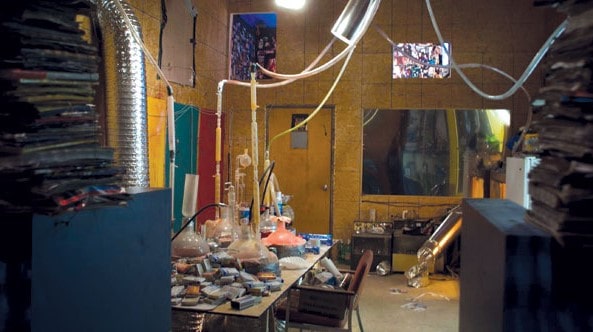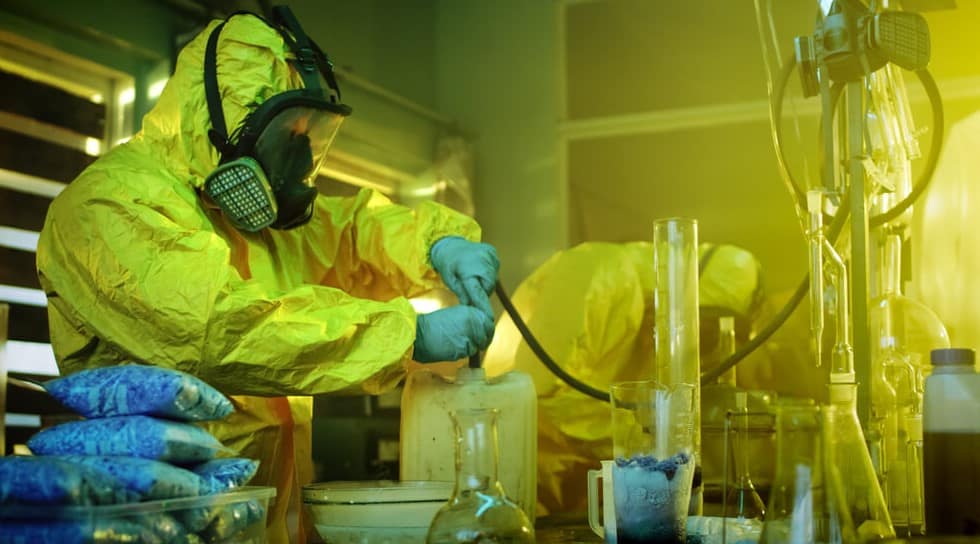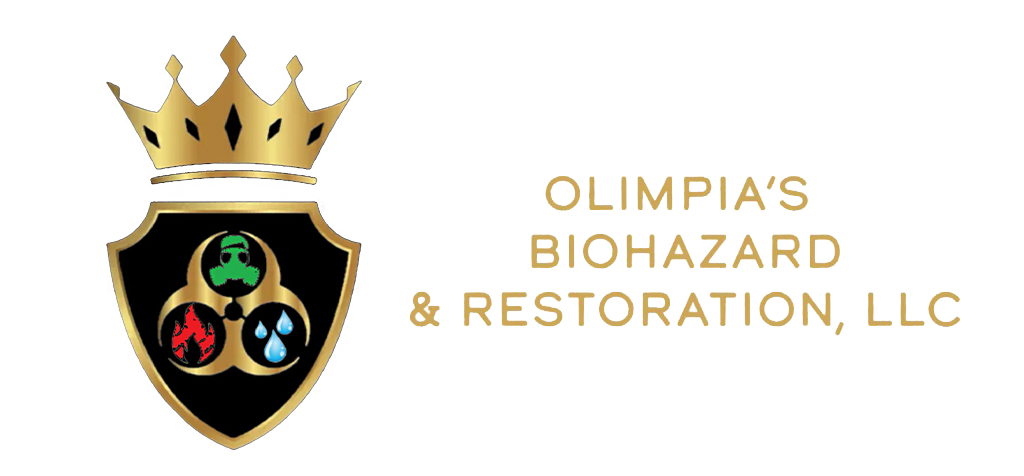Within the realm of hidden dangers that can affect indoor air quality and occupant health, the impact of methamphetamine lab residue on HVAC systems stands as a lesser-known but significant concern. Meth lab operations leave behind toxic residues that infiltrate ventilation systems, posing a risk to those who breathe the air within affected spaces. This guide delves into the intricate web of challenges associated with meth lab contamination in HVAC systems, exploring the health risks, detection methods, decontamination procedures, and the crucial role of public awareness. Together, we embark on a journey to understand and address this hidden hazard, striving for safer and healthier indoor environments.
Hidden Threats: Meth Lab Residue’s Impact on HVAC Systems
As Olimpia’s Biohazard & Restoration LLC seek to ensure clean and healthy indoor environments, one often-overlooked hazard emerges from the shadows: the impact of methamphetamine lab residue on HVAC (Heating, Ventilation, and Air Conditioning) systems.


Understanding Meth Lab Residue: A Hidden Hazard:
Methamphetamine labs leave behind more than just illegal substances; they contaminate properties with toxic residues that can be harmful to health. This section delves into the hidden hazards of meth lab residue, explaining how the chemicals used in meth production can settle within HVAC systems, endangering occupants and necessitating thorough cleanup and decontamination.
The HVAC System’s Role in Spreading Meth Lab Contamination:
HVAC systems play a pivotal role in distributing meth lab residue throughout a building. As air circulates, it can carry volatile substances and particulates from meth production, dispersing them far and wide. This section elucidates the mechanisms by which HVAC systems exacerbate contamination issues, emphasizing the need for diligent cleanup and preventive measures.
Health Risks Associated with Meth Lab Residue Exposure:
Exposure to meth lab residue can lead to severe health consequences. This section outlines the various health risks, from respiratory issues to neurological symptoms, that occupants may face when HVAC systems are contaminated. Understanding these risks underscores the urgency of addressing meth lab contamination in HVAC systems.
Identifying Meth Lab Contamination in HVAC Systems:
Detecting meth lab contamination in HVAC systems can be challenging, as it’s often invisible to the naked eye. This section discusses the signs and indicators that professionals look for during assessments, emphasizing the importance of early detection to mitigate risks.
Professional Assessment and Cleanup of Contaminated HVAC Systems:
Addressing meth lab contamination in HVAC systems requires the expertise of trained HVAC systems professionals. This section explores the methods and protocols employed by meth lab cleanup experts to assess and clean contaminated systems safely and effectively.
Decontamination Techniques: Restoring HVAC Systems Safely:
Decontaminating HVAC systems from meth lab residue is a meticulous process. This section delves into the decontamination techniques and technologies used to restore HVAC systems to a safe and functional state, ensuring that occupants are no longer exposed to harmful residues.


Legal and Ethical Considerations in Meth Lab Cleanup:
The cleanup of meth lab residues involves legal and ethical considerations. This section addresses the regulations and guidelines governing meth lab cleanup, as well as the ethical responsibility of professionals to protect occupants and communities.
Preventing Meth Lab Contamination in HVAC Systems:
Prevention is key to mitigating the impact of meth lab contamination in HVAC systems. This section discusses strategies for preventing contamination, such as regular maintenance, security measures, and educational efforts within communities.
Public Awareness and Education on Meth Lab Hazards:
Raising public awareness is crucial in combatting meth lab contamination. This section explores the importance of educating homeowners, property managers, and the general public about the risks associated with meth labs and the role of HVAC systems in spreading contamination.
Collaborative Efforts: Professionals and Communities Mitigating Risks:
Addressing the impact of meth lab residue on HVAC systems is a collaborative effort. This section emphasizes the importance of cooperation between professionals, law enforcement, property owners, and communities to minimize the risks and consequences of meth lab contamination in HVAC systems.
FAQs:
FAQ 1: What is meth lab residue, and why is it a concern for HVAC systems?
Answer: Meth lab cleanup is connected to public health concerns, as the residues left behind in properties, including those in HVAC systems discussed in the ‘Impact of Meth Lab Residue on HVAC Systems,’ pose serious health risks to occupants and necessitate thorough decontamination to safeguard the community.
FAQ 2: How can I tell if my HVAC system is contaminated with meth lab residue?
Answer: Identifying contamination isn’t easy visually. Professionals use specialized testing to detect meth lab residue. Common indicators include unusual odors, unexplained health issues, or a history of meth production in the property.
FAQ 3: Is it possible to clean and restore an HVAC system contaminated by meth lab residue?
Answer: Yes, professional decontamination services can effectively clean and restore contaminated HVAC systems. These experts use specialized techniques to remove hazardous residues and ensure safe indoor air quality. Prompt cleanup is vital to mitigate health risks.
Conclusion:
The impact of meth lab residue on HVAC systems is a multifaceted concern that demands attention from both property owners and communities. The insidious nature of meth lab contamination, with its potential to compromise indoor air quality and endanger occupants’ health, necessitates thorough assessment and professional cleanup. Identifying the signs of contamination, understanding the health risks, and taking preventive measures are crucial steps in safeguarding indoor environments. Collaboration between professionals, regulatory agencies, and communities is essential to effectively mitigate the consequences of meth lab contamination and restore the safety and functionality of HVAC systems. By addressing this issue comprehensively, we can ensure healthier, safer, and more secure living spaces for all.
